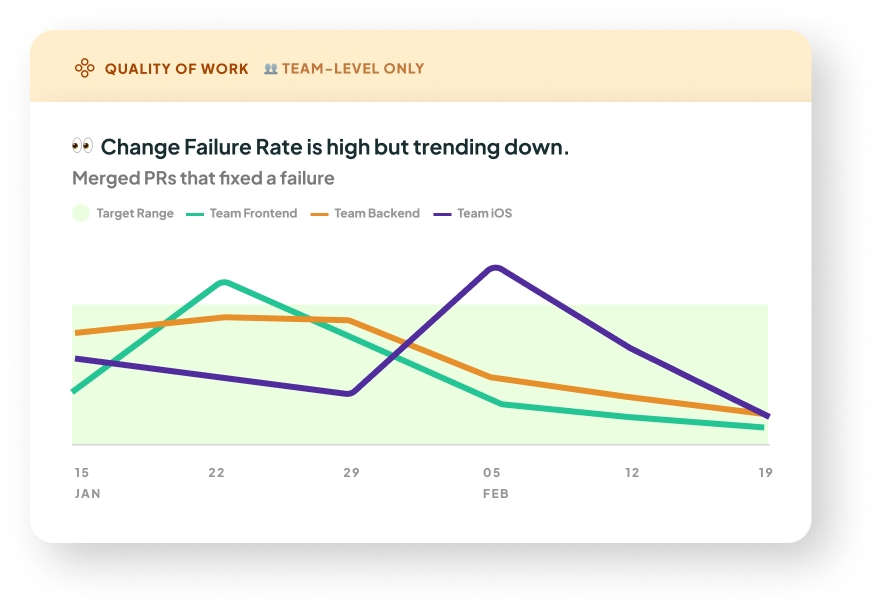Change Failure Rate
Note: this metric is only shown at a team level, not an individual level.

What it is: The percentage of PRs merged that indicate that some kind of failure was released and had to be fixed.
Why it matters: This is our take on DORA's Change Failure Rate, which indicates the percentage of deployments that cause a failure in production. It's a lagging indicator of the quality of software that is being deployed - how often does it contain bugs that cause failures later?
How we calculate it: We calculate the % of merged PRs that contain any of the words rollback, hotfix, revert, or [cfr] in the PR title, out of all merged PRs. We tested and chose these keywords to catch most cases where a PR was required to fix a previously-released bug, while minimizing false positives.
What good looks like
In Google's DORA research, the top 15th percentile have a Change Failure Rate of 0-4% (see DORA 2025). The DORA benchmark has changed over the years – it was 0%-5% until recently, and 0%-15% before that.
Last updated
Was this helpful?

